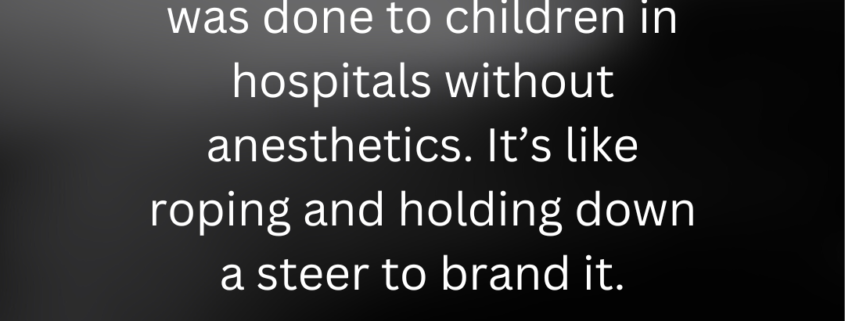Three keys to fetal pain – Part 1: The Definition
The way I see it, there are three keys to fetal pain:
- The IASP’s revised definition of pain,
- 4D ultrasound studies of fetal behavior, and
- The diminution of cortical necessity.
Today I’ll discuss the first key: the International Association of the Study of Pain (IASP)’s revised definition of pain, which has profound implications for how we conceptualize fetal pain.
Why does the definition matter?
It may seem strange that I begin with a definition instead of a scientific or medical finding. But in order to discuss a topic, we must define it. The definition of pain is really a distillation of all our current knowledge of pain—philosophy and science—and it matters immensely that we get it right.
The alternative is that we fail to treat pain because we’ve labeled it as “reflex.” This is essentially what happened with animals and newborn children until the late 1980s, when physicians and veterinarians routinely gave their patients muscle paralyzers but withheld anesthesia during even the most invasive surgeries. As pediatric pain expert Myron Yaster mused in 1991:
Most adults would be shocked if they saw what was done to children in hospitals without anesthetics. It’s like roping and holding down a steer to brand it.
Myron Yaster
Judging by Henry Bigelow’s comments in the first issue of Journal of the American Medical Association in 1848, surgeons have long been “holding down” their tiny patients instead of giving them anesthesia. The Harvard Medical School professor of surgery wrote:
Indeed, the facility of controlling a child of this age, together with the fact that it has neither the anticipation nor remembrance of suffering, however severe, seems to render this stage of narcoticism [anesthesia] unnecessary.
Henry Bigelow
Our wrong idea of pain caused us to ignore pain behavior, transforming operating rooms into torture chambers for countless babies. It matters how we define pain.
How and why did the IASP change their definition of pain?
Probably most pain scientists and clinicians accept the IASP’s definition of the term, developed in 1979. Back then, the IASP defined pain as:
An unpleasant sensory and emotional experience associated with actual or potential tissue damage, or described in terms of such damage [italics mine].
In 2020, the IASP revised this definition to account for “advances in our understanding of pain,” with particular emphasis on pain in animals and nonverbal humans.
“It has been argued that the [1979] definition emphasizes verbal self-report at the expense of nonverbal behaviors that may provide vital information, especially in non-human animals and humans with impaired cognition or language skills,” the IASP explained in 2020, updating its definition of pain to this:
An unpleasant sensory and emotional experience associated with, or resembling that associated with, actual or potential tissue damage.
At first glance, the new definition seems little changed. The IASP excised the requirement that pain be described and added six notes below it, the final one stating that “Verbal description is only one of several behaviors to express pain.”
But these small changes have massive implications for nonverbal creatures. Pain behavior—a concept that most of us who have cared for animals or babies intuitively grasp—may now, finally, be considered.
It’s easy to see how a definition of pain that ignored behavior and required a patient to verbally describe their pain would disqualify animals and newborns. Pain was seen as a complex phenomenon that involved not just the raw sensation associated with injury; pain had to be learned and spoken in order to be felt.
If none of that quite makes sense, then consider it to have been a triumph of philosophy over empathy. History is full of such examples.
This recognition of pain behaviors, and the dethroning of verbal report—formerly the “gold standard” of pain assessment, now “only one of several behaviors to express pain”—is a welcome shift. Instead of theory determining observation, observation may now inform theory. This implies that pain, instead of having to be learned and spoken in order to be felt, must be felt in order to be learned and spoken.
With this new definition of pain, behavior is key. That’s significant in light of the developments in 4D ultrasound and fetal behavioral studies, which I’ll examine in part two.




Leave a Reply
Want to join the discussion?Feel free to contribute!